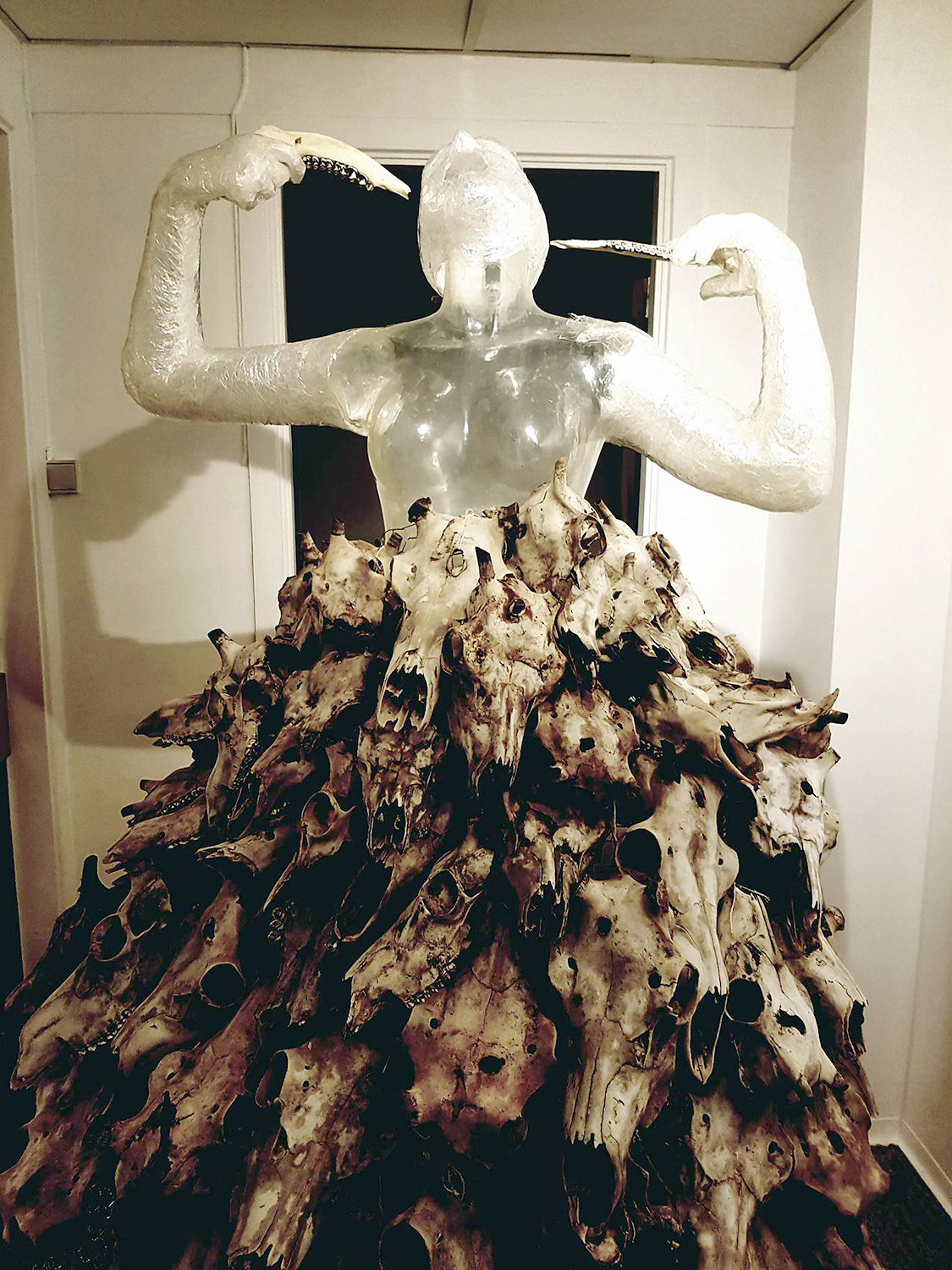On February 1, 2016, the town of Tana in Sápmi/Northern Norway awoke to the sight of 200 reindeer heads piled into a pyramid in front of the Indre Finnmark District Court. This was the day that young reindeer herder Jovsset Ánte Sara initiated public proceedings against the Norwegian state to challenge the obligatory cull dictated by the Norwegian Reindeer Herding Act of 2007, claiming that standardized herd reduction was tantamount to enforced bankruptcy.
As the Sámi community struggles to preserve its identity—its language, livelihood, and culture—after centuries of “Norwegianization,” the forced culls affect the youngest, and smallest, herders the most. These herders are a fragile link to traditions that the Sámi community has a legal right to preserve. Pile o’ Sápmi was conceived by Marét Ánne Sara as an artwork and “as an extended art movement accompanying the trial of my brother … to highlight the struggle taking place.” Born in 1983, to a family of reindeer herders in Kvaløya, Sara is the founder of the Kautokeino artist collective. She is part of a new generation of Sámi artists working to uphold the rights of their community.
Pile o’ Sápmi draws upon spiritual, ecological, and political concerns. It references “Pile of Bones,” the Indigenous name for the place where the Cree nation stacked buffalo bones to anchor the animals’ spirits to the land, thereby ensuring their continued presence in what is today known as Western Canada. The artist also refers to the brutal colonial history of North America, where trophy mountains of bones testified to the buffalo massacre that served to dispossess Indigenous peoples of the land and pen them into reserves. These bones were also used to produce fine bone china, an interest reflected in Sara’s latest work.
Sámi leitmotifs of adaptability and recyclability are also evident in the way that Pile o’ Sápmi allows natural processes to unfold varying narratives. If the freshly slaughtered reindeer heads provide the nose and eye with uncomfortable reminders of decay, the bullet holes at the center of their skulls reveal the colonial killing system’s disrespect for Indigenous processes that would have preserved and utilized every part of the dead animals.
Máret Ánne Sara’s brother won the trial; the verdict stated that the cull violates his property rights as protected by the European Convention on Human Rights. The Norwegian government has appealed the case.
—Katya García-Antón

